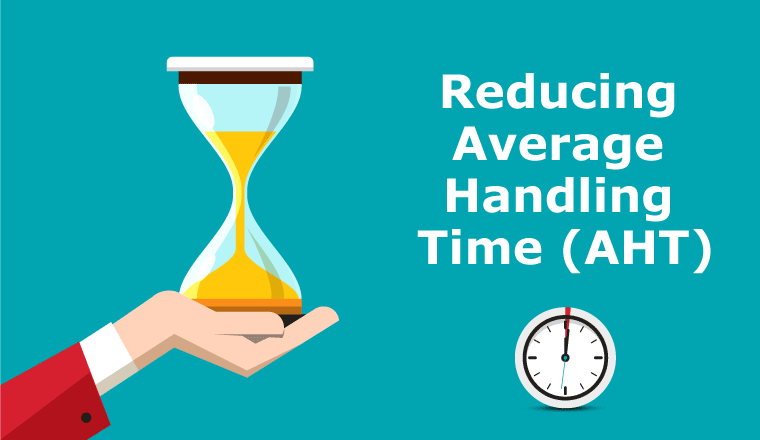Tech
Maximizing Efficiency: Strategies to Reduce Average Handle Time in the Call Center

In today’s fast-paced business landscape, customer service plays a pivotal role in maintaining and expanding a company’s customer base. Call centers are at the forefront of this effort, acting as the bridge between customers and the products or services they seek. One crucial metric that call centers closely monitor is the Average Handle Time (AHT). AHT is a key performance indicator that reflects the efficiency and effectiveness of a call center’s operations. In this article, we will delve into the concept of AHT and explore effective strategies to reduce it, ultimately enhancing the overall customer experience.
Understanding Average Handle Time (AHT)
Before we dive into strategies for reducing AHT, it’s essential to have a clear understanding of what AHT represents.
What is Average Handle Time?
Average Handle Time (AHT) is a metric used in call centers to measure the total amount of time an agent spends on a single customer interaction, from the moment the call is initiated until it is concluded. It encompasses various aspects of the interaction, including the time spent talking to the customer, placing the customer on hold, and performing post-call tasks such as data entry or follow-up activities.
AHT is typically calculated as follows:
AHT=(TotalTalkTime+TotalHoldTime+TotalAfter−CallWork)/TotalNumberofInteractions
This metric is crucial because it directly impacts several aspects of call center performance, including customer satisfaction, operational costs, and agent productivity.
The Significance of Reducing AHT
Reducing AHT is not just about speeding up interactions; it’s about improving the overall efficiency and effectiveness of the call center. Here are some compelling reasons why reducing AHT is crucial:
1. Improved Customer Satisfaction
Customers appreciate quick and efficient service. By reducing AHT, call centers can minimize wait times, leading to higher levels of customer satisfaction. Happy customers are more likely to remain loyal and recommend the company to others.
2. Cost Savings
Shorter handling times translate to reduced operational costs. This can lead to substantial savings in terms of agent salaries, infrastructure, and technology investments.
3. Enhanced Agent Productivity
Agents who can resolve issues more quickly can handle a higher volume of calls, increasing their productivity. Reducing AHT also contributes to a less stressful work environment for agents.
4. Increased Revenue
Faster resolution times can lead to increased sales opportunities. Customers who have their issues resolved promptly may be more inclined to make additional purchases or upgrades.
Effective Strategies to Reduce Average Handle Time
Now that we understand the significance of reducing AHT, let’s explore some effective strategies that call centers can implement to achieve this goal.
1. Comprehensive Agent Training
Investing in thorough training for call center agents is the foundation of reducing AHT. Agents should be equipped with the knowledge and skills necessary to handle a wide range of customer inquiries and issues efficiently. This includes product knowledge, communication skills, and problem-solving abilities.
2. Implementing Robust Knowledge Management Systems
Knowledge is power in the call center industry. By implementing robust knowledge management systems, agents can access information quickly and provide accurate solutions to customers without unnecessary delays. A well-organized knowledge base is an invaluable resource for reducing AHT.
3. Utilizing Technology and Automation
Automation tools such as chatbots and Interactive Voice Response (IVR) systems can handle routine inquiries and tasks, allowing human agents to focus on more complex issues. These technologies can significantly reduce AHT by streamlining processes and providing instant responses.
4. Effective Call Routing
Implementing intelligent call routing ensures that customers are directed to the most suitable agent based on their needs and the agent’s expertise. This reduces the time customers spend navigating through multiple transfers and increases the likelihood of first-call resolution.
5. Real-time Monitoring and Coaching
Call centers should employ real-time monitoring and coaching to provide agents with immediate feedback and guidance during customer interactions. This can help agents resolve issues more efficiently and improve their overall performance.
6. Streamlining After-Call Work
After concluding a call, agents often need to perform administrative tasks like updating customer records or creating case notes. Streamlining these after-call work processes can help agents handle more calls without increasing AHT.
7. Continuous Performance Analysis and Improvement
Regularly analyzing call center metrics and AHT data is essential for identifying trends, bottlenecks, and areas for improvement. Implementing a culture of continuous improvement ensures that strategies are adapted to changing customer needs and expectations.
Case Study: Talkdesk’s Approach to Reducing AHT
To illustrate these strategies in action, let’s take a look at a real-world example. Talkdesk, a leading provider of cloud-based call center software, has published an informative blog post on “How to Reduce Average Handle Time in the Call Center”. In the blog post, Talkdesk outlines practical steps and best practices for call centers to optimize their AHT. This resource serves as an excellent reference for call center managers and professionals seeking to enhance their operations.
Conclusion
Average Handle Time is a critical metric that directly impacts a call center’s efficiency and customer satisfaction levels. By implementing the strategies discussed in this article, call centers can work towards reducing AHT and achieving better outcomes for both their customers and their business. Remember that the key to success lies in continuous improvement and a commitment to providing exceptional customer service.
Reducing AHT is not just a goal; it’s a journey towards delivering faster, more efficient, and more satisfying customer interactions. Embrace this journey, and your call center will reap the rewards of enhanced performance and customer loyalty.
Kenneth is a proud native of sydney, born and raised there. However, he pursued his education abroad and studied in Australia. Kenneth has worked as a journalist for almost a decade, making valuable contributions to prominent publications such as Yahoo News and The Verge. Currently, he serves as a journalist for The Hear Up, where he focuses on covering climate and science news. You can reach Kenneth at [email protected].










